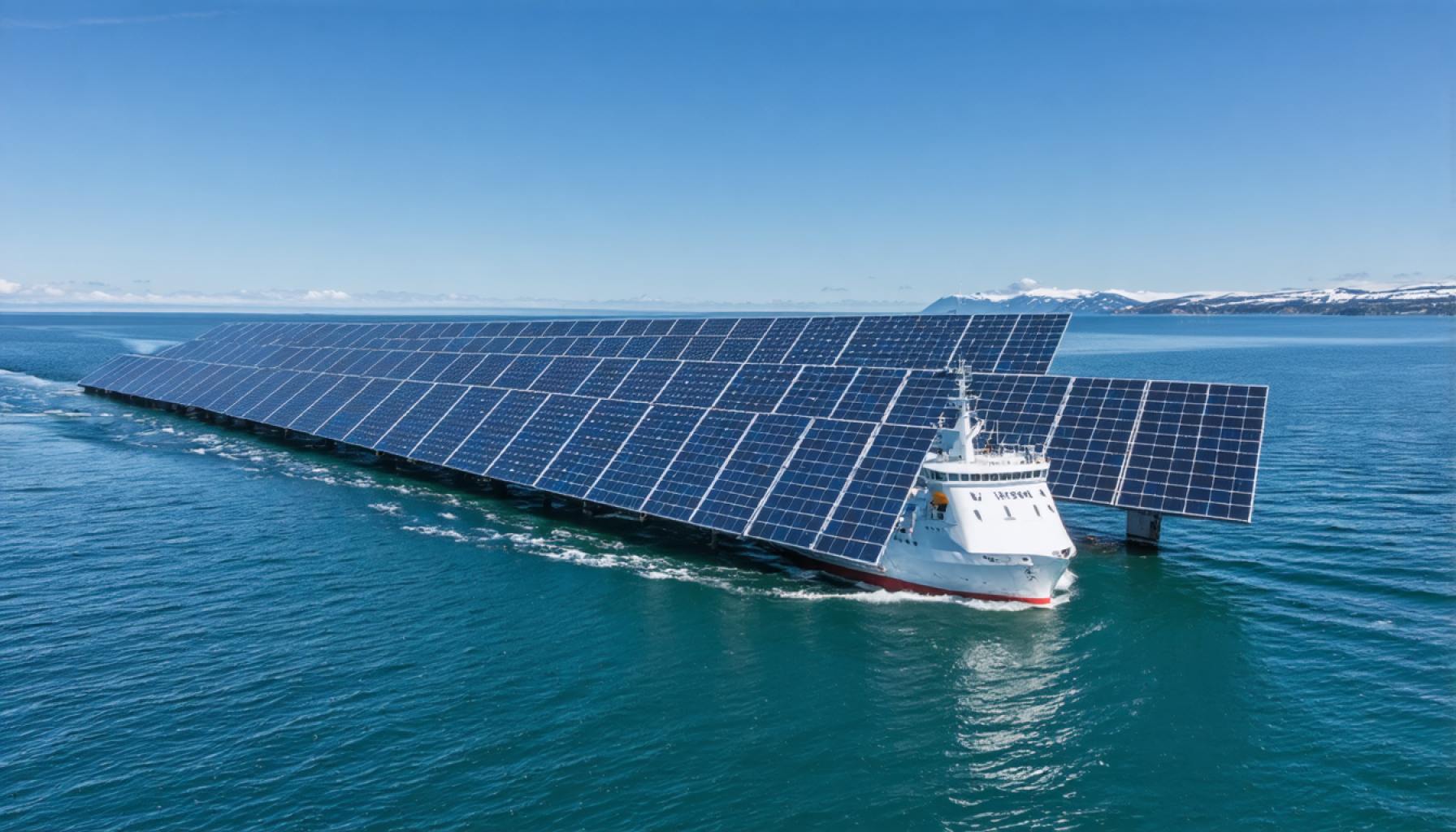- A hydrogen hub is being developed in Bodø, Norway, aimed at transforming energy use in the maritime sector with clean hydrogen.
- The project is a collaboration among Cyient, GreenH, and Luxcara, focusing on sustainable energy infrastructure.
- Utilizing renewable electricity, green hydrogen will power initiatives like the Vestfjorden ferries, reducing emissions in transport.
- Cyient contributes engineering expertise, while GreenH and Luxcara develop the infrastructure and economic prospects.
- Construction began in fall 2024, with Torghatten Nord AS supporting hydrogen fuel for its ferries, highlighting maritime sustainability.
- This initiative is a key example of innovative thinking and strategic partnerships driving global renewable energy efforts.
Nestled amidst the rugged landscapes of Bodø, Norway, a groundbreaking initiative is quietly taking shape, poised to redefine the future of energy. A consortium consisting of Cyient, GreenH, and Luxcara is spearheading the development of a hydrogen production and distribution hub that promises not only to power Norway’s maritime sector with clean energy but also to set a new blueprint for sustainable energy infrastructure worldwide.
The project, located at Langstranda in Bodø, serves as a pivotal chapter in Norway’s ambitious quest for renewable energy dominance. As the world grapples with climate challenges, the advancement of green hydrogen as an alternative fuel source is garnering global attention. This versatile energy carrier, produced via electrolysis using renewable electricity, is set to fuel non-polluting marvels—the Vestfjorden ferries, among others—while slashing emissions and bolstering sustainability in transport.
Signifying a strategic collaboration, Cyient, with its robust expertise in green technologies, is undertaking the detailed engineering required to bring this innovative vision to fruition. Their role is critical, underpinning the structural and operational blueprints necessary for the seamless integration of this green hydrogen facility into the existing energy fabric.
GreenH specializes in creating infrastructure for green hydrogen emanating from renewable resources. Partnering with Luxcara, an asset manager known for its renewable energy initiatives across Europe, the joint effort focuses on nurturing systems that not only provide sustainable fuels but also create economic prospects by revitalizing local industries and communities.
The construction phase commenced in the fall of 2024, marks a tangible stride toward actualizing this clean energy marvel. The vested interest of Torghatten Nord AS, reflected through a long-term agreement to utilize hydrogen fuel for its ferry services, underscores a palpable commitment to maritime sustainability. This facility will undoubtedly become a linchpin in the broader narrative of Norway’s green energy transformation.
Amidst the technical blueprints and engineering marvels, lies a profound narrative—one where human ingenuity meets environmental necessity. As global eyes fixate on Bodø, these partners stand at the forefront of an energy revolution, illustrating the boundless potential of green hydrogen technology.
The takeaway is clear: the Bodø hydrogen project exemplifies how innovative thinking and strategic alliances can pave the way for a sustainable future. By seamlessly integrating clean energy into critical sectors, it sets a notable precedent for global renewable energy efforts. As this Norwegian project unfolds, it invites a worldwide audience to imagine—and strive for—a greener, hydrogen-powered tomorrow.
How Norway’s Hydrogen Hub in Bodø is Pioneering a Green Energy Future
Overview
The Bodø hydrogen project in Norway represents a transformative step in the global push towards sustainable energy. This innovative initiative, driven by a partnership between Cyient, GreenH, and Luxcara, aims to establish a green hydrogen production and distribution hub that will power Norway’s maritime sector with zero-emission energy. Here’s a deeper dive into the project’s potential impacts, sustainability goals, and future prospects.
How-To Steps & Life Hacks for Implementing Green Hydrogen Projects
1. Partnerships with Industry Leaders: Collaborate with firms that have expertise in green technologies and renewable energy infrastructure.
2. Leverage Electrolysis Technology: Utilize renewable energy sources, such as wind or solar, to power electrolysis processes, thus producing green hydrogen efficiently.
3. Secure Long-term Agreements: As seen with Torghatten Nord AS, establish long-term contracts with local industries like maritime transport to ensure demand and stable project financing.
4. Incorporate Community and Economic Development: Foster economic growth by integrating hydrogen production projects with local industries and communities, creating jobs and revitalizing regions.
Real-World Use Cases
– Maritime Transport: Green hydrogen will be used to power vessels, such as Vestfjorden ferries, cutting emissions substantially compared to conventional fuels.
– Energy for Remote Locations: Hydrogen can be stored and transported, making it a suitable energy source for remote areas without access to the main grid.
Market Forecasts & Industry Trends
– Rising Demand for Green Hydrogen: As countries tighten emissions regulations, the demand for green hydrogen as an alternative energy source is expected to accelerate.
– Investment in Renewable Technologies: Projects like the Bodø hydrogen hub align with global trends in increasing investments in renewable energy infrastructure.
Security & Sustainability Insights
– Energy Security: Green hydrogen contributes to energy independence by utilizing domestic renewable resources rather than relying on imported fossil fuels.
– Environmental Benefits: The project significantly reduces carbon emissions, a tangible move towards meeting climate goals outlined in the Paris Agreement.
Pros & Cons Overview
Pros:
– Zero emissions during the production and consumption stages.
– Diversifies energy sources, reducing reliance on oil and gas.
– Stimulates local economies and job creation in clean energy sectors.
Cons:
– High initial infrastructure costs.
– Requires technological advancements for cost-efficient deployment.
– Hydrogen storage and transport pose technical challenges.
Actionable Recommendations
– Invest in Research and Development: Support innovations in battery and storage technologies to address hydrogen’s current limitations.
– Policy Support: Advocate for governmental policies that incentivize renewable energy projects, ensuring smoother implementation and broader adoption.
Conclusion
The hydrogen project in Bodø not only showcases Norway’s leadership in renewable energy but sets a precedent for global green hydrogen initiatives. By integrating sustainability into core energy systems, these partnerships underline the crucial role of green hydrogen in an eco-friendly future. Stakeholders worldwide should take note of the project’s structure and community engagement strategy as a blueprint for similar endeavors.
Discover more about sustainable initiatives by visiting Cient and Luxcara.
